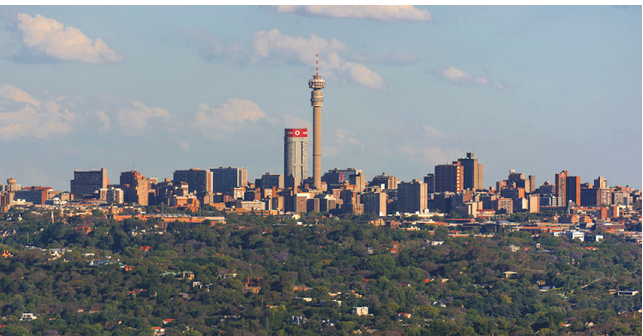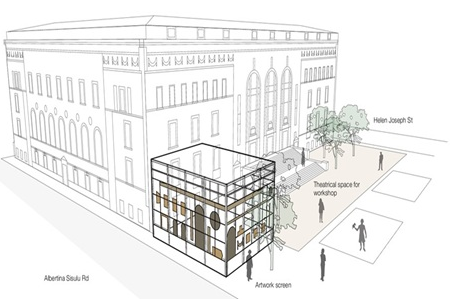Plans for South Africa’s first wind farm at sea

13-12-2024
Read : 831 times
My Broadband
Source
South Africa could get its first offshore wind farm along the coast of Richards Bay in KwaZulu-Natal in the next few years.
The developers of the Gagasi Offshore Wind Farm recently began the environmental impact assessment (EIA) portion of their project.
The EIA will include studies on the proposed plant’s potential effect on fishing, marine ecology, and its visual impact.
As part of the EIA, the developers invited interested and affected parties to provide their comments or raise concerns about the plant.
Gagasi is being developed by GenesisHexicon, a joint venture between South African firm Genesis Eco-Energy Developments and international project and technology developer Hexicon.
Genesis has helped build several of South Africa’s first wind and solar farms.
Energize magazine has shared a background document with details of the project, including its configuration, scale, location, and explanations for various design elements.
The proposed floating farm could consist of up to 54 wind turbines with capacities ranging from 15MW to 25MW and a peak output of 810MW.
For reference, South Africa’s biggest onshore wind farms have a peak production of roughly 150MW.
The area in which the developers have proposed to roll out the farm is part of South Africa’s territorial waters. Therefore, it will need to be leased from the South African government.
The proposed leasing area will cover a 140km2 rectangular area to the east of Richards Bay, with its length extending in a north-eastern direction.
The location specifically avoids the uThukela and iSimangaliso marine protected areas to the southwest and the northeast, respectively.
The area’s closest point to the coast is on its northern side, where it is roughly 5km from the nearest land. Its southern point, which is the closest to Richards Bay, is roughly 16km off the coast.
Despite the great distance, the turbines will often be visible to the naked eye.
At the highest point of their rotation, the turbine blades’ edges will be 270m or 370m above the sea, both higher than the roughly 230m of South Africa’s tallest building — The Leonardo in Sandton.
Standing on a beach at five meters above sea level, the horizon is about 8km away, provided that mist, low clouds, or pollution don’t obstruct the view.
At 370 meters above sea level, the turbines would be visible from nearly 70km away on a clear day.
Floating farm
The turbines will feature a floating design as opposed to a fixed-foundation construction.
That will see them mounted on floating foundations at a port before being tugged into position, where they will be tethered to the sea bed.
The developer has explained that this option will allow the farm to be located further away from shore in deep waters, limiting impacts on coastal seabirds and terrestrial wildlife.
In addition, visual impacts from land-based receptors are also reduced as wind farms move further offshore.
The preparation of the seabed is also less complex compared to the bottom-fixed wind farms and will cause less sediment spread and noise as only moorings for the foundations are required.
However, the farm won’t be rolled out overnight.
GenesisHexicon has estimated it will take 10 years due to limits of supply chain logistics and transmission grid capacity.
Wind resources abundant along the South African coast
South Africa already has roughly 3,442MW of onshore wind capacity currently in operation, most of which is run by independent power producers (IPPs).
Earlier this year, the South African Wind Energy Association (SAWEA) told MyBroadband that offshore wind’s different technical capabilities and benefits meant that it could also play a part in South Africa’s energy mix.
A Stellenbosch University study from 2020 found that offshore wind farms could supply between 15% and 800% of South Africa’s annual electricity demand, based on where they were built.
However, there are several reasons why onshore wind farms have been the preferred type of plant.
Firstly, South Africa has high onshore wind resources and large pieces of land which are located closer to the transmission grid.
Secondly, many onshore wind farms are built on private land leased or owned by an IPP, whereas offshore wind farms are built on government property.
There are currently no established guidelines or regulatory frameworks for approving this type of leasing.
Lastly, research by the Council for Scientific and Industrial Research (CSIR) found that offshore wind farms are significantly more costly to build.
Bottom-fixed offshore wind is about 91% more expensive than onshore installations, while floating was 308% more expensive.
The big upside to putting similar turbines in the sea as on land makes them about 25% more efficient, due to higher wind speeds and greater wind consistency over the ocean.
Recent News
Here are recent news articles from the Building and Construction Industry.
Have you signed up for your free copy yet?









